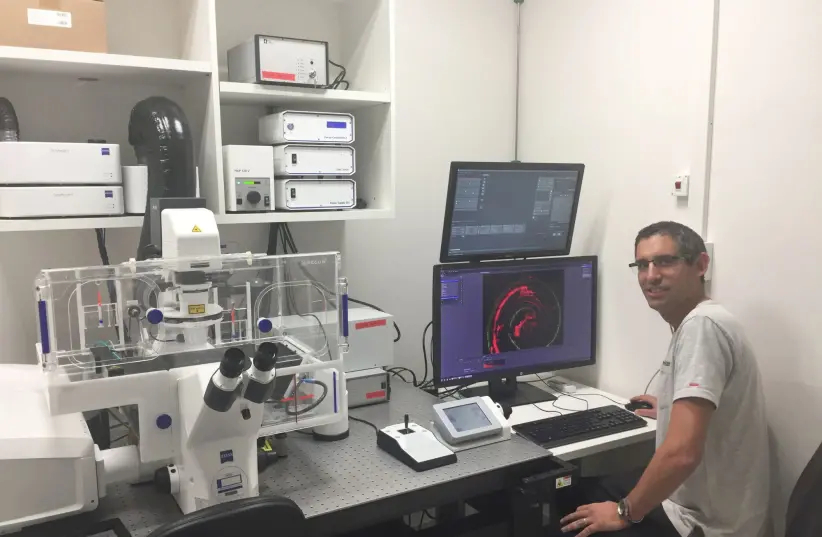Revolutionary Inner Ear Study Could Help Reverse Hearing Loss
Israeli researchers have for the first time shown that the organization of hair cells is driven by mechanical forces like how atoms are organized into a crystal.
By JOSHUA ROBBIN MARKS/THE MEDIA LINE NOVEMBER 26, 2020 07:34

Prof. David Sprinzak (photo credit: TEL AVIV UNIVERSITY) In what could have important implications for the development of regenerative treatments for hearing loss in humans, a study led by a team of Israeli researchers has for the first time shown that physical forces drive the organization of hair cells in the inner ear of mammals. The scientists from Tel Aviv University, with participation from researchers in Switzerland and Japan, had their findings published last month in the journal Nature Communications. The paper’s abstract compared the ordering of a “checkerboard-like pattern of hair cells” to the organization of atoms into a crystal. “The findings that we have in this study provides an understanding of the processes that lead to functional hair cells during embryonic development and this will also be important in understanding how to regenerate hair cells,” Prof. David Sprinzak, a researcher from the School of Neurobiology, Biochemistry and Biophysics at the George S. Wise Faculty of Life Sciences at Tel Aviv University, who directed the study, told The Media Line. Sprinzak explained that the mammalian ear has three parts: the outer, middle, and inner ear. Within the inner ear is a spiral structure called the cochlea that contains sensory cells called hairs. Sound waves cause the hair cells to vibrate. The vibrations are converted into electrical signals that are transmitted to the brain.“When we are born we have all the hair cells and as we grow old or suffer certain trauma in the inner ear, we start to lose these hair cells and this loss of hair cells leads to hearing loss,” Sprinzak said. In addition to researchers at Sprinzak’s laboratory, the study was performed by scientists at the Sackler Faculty of Medicine and at the Sagol School of Neuroscience at Tel Aviv University. The researchers studied how the hair cells organize in mouse embryos at different developmental stages. Sprinzak described the mice’s hair cells as like a human’s inner ear, pointing to the blue picture of the mouse hair cells as “beautifully organized.” Prof. Lawrence Lustig, the Howard Smith Professor and Chair of Otolaryngology at Columbia University and New York‑Presbyterian Hospital, who was not involved in the study, told The Media Line that the research is an important contribution to the development of therapeutics for hearing loss.“Anything that gives us sort of a fundamental understanding of how hair cells develop is a clue to the molecular pathways that we can exploit to regrow those hair cells,” Lustig said. Continued Lustig: “It’s not going to directly lead to therapeutic interventions, but I think it’s another chink in the armor of what we need to be able to develop drugs to cause hair cells to regrow and do it in a way that is functionally relevant.”
